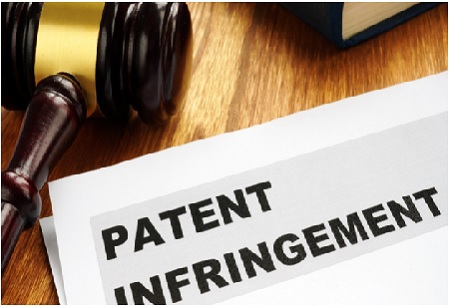3 Ways You Might Be Unintentionally Infringing
By Consultants Review Team

Consultants Review Team
Infringement and plagiarism are both not only frowned upon but illegal in many cases. Of course, most people would never intentionally do such a thing. but unintentional infringement is a lot more common than you might think. Legally, intent does not matter when it comes to intellectual property law, so it’s important to be aware of any potential missteps in this area. Here are some of the most common causes of unintentional infringement, and how to address them.
1. Copyright Infringement
Copyrights are one of the four core IP law categories, the other three being patents, trademarks, and trade secrets. Many people engage in copyright infringement innocently and usually harmlessly, but it’s possible that even accidental uses of copyrighted material could lead to damage payments and lawsuits.
Copyrights cover creative work. This can cover music, art, writing, and even lines of code. The two most common categories where people run into issues are photography and music. It’s easy to save an image from Google and use it for your project, poster, or presentation, but could this be a legal issue?
In a word, yes. A simple image search won’t tell you whether an image is under copyright, and so anything beyond fair use, which can be very complex, could be problematic. Be especially careful when utilizing images for any public display or work, and when the use of the image directly or indirectly helps you make a profit or receive a benefit.
Music copyright law is usually better understood and acknowledged by most people. Sites like Youtube and Vimeo will usually auto-identify music used in anything uploaded to the site, and let the original owner decide how to proceed. In both these cases, it helps to acknowledge the original creator via a credit or a link to the source material, as this way you’re not passing the work off as your own.
Lastly, the best course of action if you really need to use copyrighted material is to contact the copyright owner and explain your case. They could say no or charge a licensing fee, but it’s worth a shot.
2. Patent Infringement
Patent infringement is another topic and usually occurs at the company level. Copyright infringement, while it can sometimes be large-scale (see the Marvin Gaye vs. Robin Thicke settlement), is usually not financially significant. Patents, however, cover inventions and grant market monopolies, and thus infringement in this area can be very serious and costly.
Just like copyright infringement, patent infringement does not have to be intentional to be illegal, although intent can often lead to harsher penalties. A good way to avoid this is to do a patent search to make sure that any product you or your company is developing has not already been patented.
Patent infringement can fall into two categories: direct and indirect. Direct infringement involves bringing a similar enough product to market as one that has an active patent for the jurisdiction in question. Indirect infringement, on the other hand, can apply when a company is involved only in part of the process for making a product. Keep in mind that if you’re just building the engine for a machine that is violating a patent, you’re still indirectly infringing.
J.D. Houvener, a patent attorney serving San Francisco, points out the other side of this situation: patent trolls. “Patent trolls will go after companies, usually smaller and newer ones that they think they can intimidate, and pursue litigation for profit, not to protect their patent itself. By staying informed about patent law and covering all your bases, you’ll be better protected against shady actors who will try to use the IP law system against you.”
3. Plagiarism
Plagiarism is a very misunderstood topic that is related to, but not identical to copyright. While copyright is a legal term, plagiarism is a concept that usually applies morally (albeit with harsh penalties in academic settings).
Instances of plagiarism can often be copyright infringement and vice versa, but the two don’t always overlap. Using a public domain work in a research paper without attribution is plagiarism, but not copyright infringement. Attributing a work under copyright but still utilizing it without a license isn’t plagiarism but is infringement.
Given this context, plagiarism isn’t really a type of infringement but is still a bad habit to get into. The most common types of plagiarism that occur unintentionally are paraphrasing without citing and using direct quotes without indication.
Writers and students will often research a subject and paraphrase a part of another paper or article, but not include an in-text citation. In most cases, this is plagiarism even if the works cited section has a reference because that specific information is not being attributed.
Using another’s exact words without quotes around them is another, and arguably more severe form of plagiarism. Even a parenthetical citation here is insufficient: quotes must be added to indicate that not only the content but the exact wording is someone else’s work.
In Conclusion
Infringement can come in many forms, and all of them can lead to financial and other penalties. It’s important to be aware of how unintentional infringement can occur, and what steps to take to avoid it.
Copyright infringement is perhaps the most common form, and is not always serious, but should be avoided wherever possible. Make sure to check that creative work you’re using is in the public domain, acceptable under fair use, or has been approved by the copyright holder. Patent infringement tends to be more serious but can be avoided by conducting a patent search and avoiding patent trolls. Lastly, plagiarism isn’t always a legal form of infringement but can carry penalties in academic and creative fields. Always make sure to follow the best citation practices.




